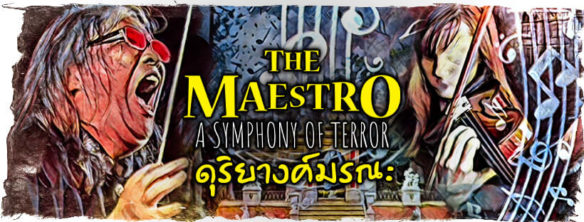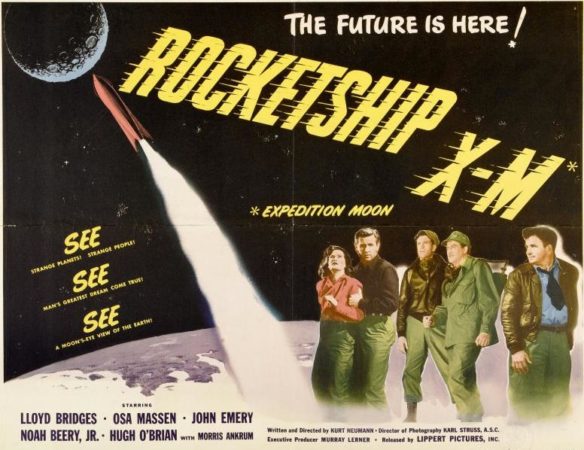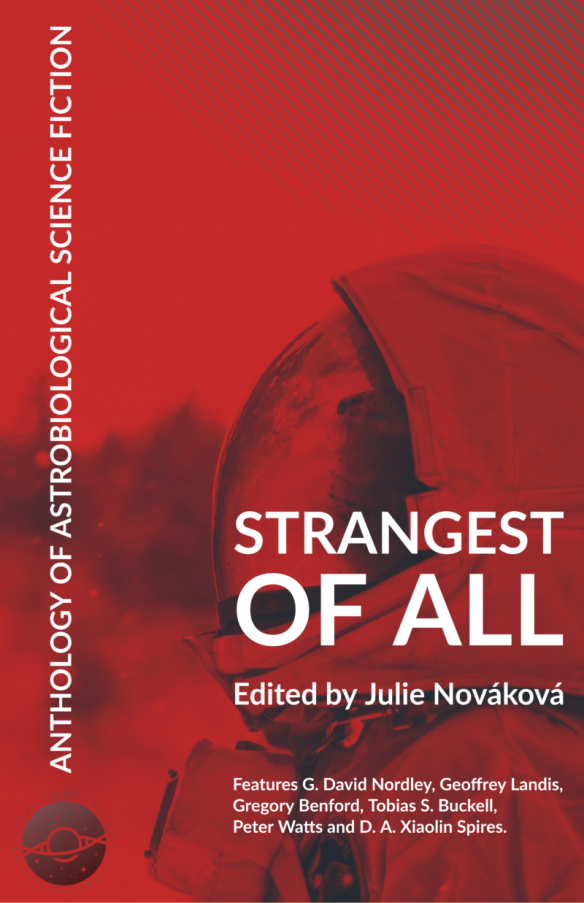(1) CATEGORY CHALLENGED. “’Asian Fantasy’ Is A Popular Category — But Is It A Useful One?” – NPR’s Kalyani Saxena poses the question to Rebecca F. Kuang, Cindy Pon, Ken Liu, Fonda Lee, Roshani Chokshi, and Tasha Suri.
…However, not all Asian authors writing fantasy feel at home with the genre label. When I reached out to Rebecca F. Kuang, author of The Poppy War, a Hugo-nominated fantasy trilogy inspired by Chinese history, she said that she finds “Asian fantasy” to be a reductive category.
“I think that Asian doesn’t really make a lot of sense, either as a literary category or as an identity category. Obviously, there are a lot of different things that fall under the subcategory of Asian, including East Asian, including South Asians, Southeast Asian, Pacific Islander, for example,” she says. “So when we call works just blanket ‘Asian,’ that belies an entire world of difference.”
So while the growing popularity of Asian fantasy marks a positive turn towards a broader and more inclusive range of experiences in fantasy, it also raises important questions: Does it actually make sense to group novels by a geographic region, especially one that encompasses billions of people? Does the label “Asian fantasy” help or hurt Asian authors? Well, the answer depends on who you’re asking….
(2) SOMTOW ON SCREEN. The Maestro – A Symphony of Terror, from Somtow Sucharitkul (in the title role) and filmmaker Paul Spurrier, opens July 14 in Bangkok at Central World SF Cinema (one of the major movie chains in Thailand). From there it will do the festival circuit, maybe book a few weird international gigs, and onto some kind of streaming platform, Somtow predicts.

The Maestro tells the story of a misunderstood genius with profound psychological problems. Rejected by the European musical establishment, he returns to his native Thailand and gets a job teaching music in a youth program. Stalked by an obsessed opera singer, ridiculed by his public, his big premiere preempted by a world-renowned conducting mediocrity, he begins a descent into madness. Accompanied by street busking violinist and a prodigy pianist from a dysfunctional family, he sets out to build a musical utopia in the wilderness to bring his transcendent vision to life … only, inevitably, it all goes horribly wrong.
(3) IF IT AIN’T BROKE, DON’T FIX IT. Hugo Book Club Blog compared the official list of 1963 Hugo Award nominees with a copy of the ballot and found something was missing. And there unquestionably was. But stay tuned for the rest of the story….
They even convinced The Hugo Awards official site to enter a correction:
Note: We previously listed Burn, Witch, Burn (1962) (alt: Night of the Eagle) ([Anglo-Amalgamated/Independent Artists] Directed by Sidney Hayers; Screenplay by Charles Beaumont & Richard Matheson and George Baxt; based on the novel Conjure Wife by Fritz Leiber) as a finalist for the 1963 Hugo Award for Best Dramatic Presentation; however, a copy of the 1963 Hugo Award final ballot that we received on June 2, 2021 does not include this work as a finalist.
And yet when you look at a scanned copy of the 1963 Worldcon Program Book Burn, Witch, Burn is included. (Remember – 1962 is the eligibility year.)
In the DRAMATIC PRODUCTION category, the top four for 1962 were:
TV series: Twilight Zone
Movie: Last Year at Marienbad
Movie: The Day the Earth Caught Fire
Movie: Burn, Witch, Burn
Why is there a discrepancy between the Program Book and the official use-no-other, no-write-ins-allowed postcard ballot? Because someone made a mistake while typing the stencil for the 1963 ballot. Chair George Scithers blushingly told what happened in the Worldcon runner’s manual he wrote after the con — DisCon 1 Guide: Introduction:
…To encourage voting, we used printed, return addressed, postage prepaid postcards with the names of the nominees thereon. This of course was expensive; about $16, plus printing. On the other hand, it did improve the number of votes (about 226 people voted in the final poll, not counting late votes) and it did insure against anyone not a member sending in a forged card. For future cons, I’d suggest prepaid postcards for both nominations and final votes. Be careful and proofread these final ballots; we left “Burn, Witch, Burn” off our postcard list (4) [If George wasn’t accepting the principle of Collective Responsibility, this would read properly: “Dick Eney left ‘Burn, Witch, Burn’ off …”], an omission which was very embarrassing indeed.
(4) GOT TO HAVE IT. Julie Nováková inventories “What Technology Can’t SF Writers Live Without?” at the SFWA Blog.
When I started editing an anthology of SF stories centered around alien life, each accompanied by a short essay on the science of the story, naturally I was curious about what sciences or technologies inspire the contributing authors, how their process works and how they rely on technology. Conducting a mini-interview with each author, I asked, among other things, whether there’s any technology they can’t imagine to live without. Think for a moment what it would be for you. Some piece of 21st century technology, or something vital developed thousands of years ago? Something to guide your writing process, or indispensable in your life regardless of the craft?
Many writers (including myself, after all) can’t imagine working without computers. Rich Larson says: “Over half my day is spent on my netbook.” He uses it for around ten hours of writing and other work, and then for recreation and socialization. At night, its USB port powers the small fan that lets him sleep. “It’s basically a vital organ!”
“My Bose QC 35 wireless headphones,” says Tobias S. Buckell. They help him create a focusing space around himself. “The ritual of turning on noise canceling and hearing the world around me drop into background; it’s this trigger for focus that really helps me,” he adds….
(5) PURPLE EATER PEOPLE. Inspired by the park’s chicken dinners and boysenberry pie – and a few less legal substances — Rolly Crump’s “Legendary theme park ride resurfaces at Knott’s Berry Farm” reports the Los Angeles Times. “Knott’s Bear-y Tales: Return to the Fair” has been recreated after being out of service for a generation. Crump, the 91-year-old designer, also helped shape It’s a Small World, the Enchanted Tiki Room and the Haunted Mansion at Disneyland,
… “Everyone comes together at the fair at the end,” Merritt says. “All the characters you saw in the previous scene make a new appearance, doing something different and fun. It’s a big room. It takes up almost half of the show building.”
Crump’s theme park designs were known for near constant movement. The figures may not have been as advanced as those at Disneyland, but every mechanical creature was moving. Today’s theme park fans may want to picture the grand musical and animal finale of Disneyland’s soon-to-be rethemed Splash Mountain when trying to picture the closing seconds of Bear-y Tales.
Describes Merritt, “In the middle of the room, there’s a big balloon coming from the ceiling where the Bear-y Family are going up and down, and there’s music, there’s Dr. Fox selling his Weird Juice, there’s puppets and there’s a frog jumping contest. There’s musicians, there’s a rabbit who’s walking on wire, there’s jugglers. It’s too much. It’s sensory overload.”
…The more one digs into the scenes of the Bear-y Tales ride, the more detail and uniqueness one uncovers.
One of Crump’s first jobs at Disney was to partner with illusionist Yale Gracey on potential effects for the Haunted Mansion, so it’s perhaps no surprise that Crump wanted a sense of magic throughout Bear-y Tales. The ride was liberal in its use of projections and Pepper’s ghost-like effects. There were floating instruments, hovering candle tips and one neat trick that Merritt recalls involving an adorable mouse suddenly appearing out of a candle holder in midair.
But perhaps the real reason Bear-y Tales had such a grip on those who rode it is because in some ways it represents the kind of ride that doesn’t really exist anymore. Crump’s original had pies — and pie scents — but was little more than a story about a bunch of nomadic, bohemian animals.
“It’s super unique. It was such a snapshot in time,” says Nix. “When you look at the pictures, it wasn’t terribly advanced. The animatronics were simple, but there were a lot of them. You just felt like you were in these scenes and places.”…
(6) VIRTUAL 4TH STREET. Elizabeth Bear has made public an edition of her Throwanotherbearinthecanoe newsletter: “What we’ve been doing around here…” After fulminating against the latest “improvement” of Instagram, she alerts readers to her coming appearance at a virtual con:
….Anyway, speaking of things to do on the internet that are actually fun, there will be a Virtual 4th Street Fantasy convention this year. I’ve recorded a panel for it (“Personalizing the Apocalypse”) with a remarkable cast of brilliant people, and we will be doing a live Q&A for attendees on the weekend of June 18th.
If you would like to “attend,” you can register here! Moneys collected go toward paying off hotel expenses, and if you would like to make a donation, the convention is a 401(c) nonprofit organization, which means donations are tax-deductible.
(7) ATWOOD ACQUISITION. “Doubleday to Publish Margaret Atwood Essay Collection” – Publishers Weekly has the story.
Doubleday will publish a new collection of Margaret Atwood’s essays, Burning Questions: Essays 2004-2021, on March 1, 2022. U.S. rights were acquired from Karolina Sutton at Curtis Brown.
…The selection of more than 50 essays, the publisher said, “seeks answers to burning questions such as: Why do people everywhere, in all cultures, tell stories? How much of yourself can you give away without evaporating? How can we live on our planet? Is it true? And is it fair? What do zombies have to do with authoritarianism?”…
(8) TOMORROW, AND TOMORROW, AND TOMORROW. John Hertz celebrates Bob Madle’s 101st birthday with this poem:
All our yesterdays
Live on, or some of them do,
In the fannish mind,
Vitally moving new deeds
Even as we joke of them.
(9) MEDIA BIRTHDAY.
June 2, 1950 – On this day in 1950, Rocketship X-M premiered. The film was produced and directed by Kurt Neumann. The screenplay was by Orville H. Hampton, Kurt Neumann and Dalton Trumbo (of Johnny Got His Gun fame). It starred Lloyd Bridges, Osa Massen, John Emery, Noah Beery, Jr., Hugh O’Brian, and Morris Ankrum. It was shot on a budget of just ninety-four thousand dollars. It was nominated for the 1951 Retro Hugo Award for Best Dramatic Presentation at the Millennium Philcon when Destination Moon won that Award. Fandom holds it in a higher esteem that audience reviewers at Rotten Tomatoes do who give it a mere fifteen percent rating! Oh, and it was the first SF film to use a theremin in the soundtrack.

(10) TODAY’S BIRTHDAYS.
[Compiled by Cat Eldridge and John Hertz.]
- Born June 2, 1857 – Karl Gjellerup. In The Pilgrim Kamanita, the Pilgrim meets a strange monk who he does not know is Gautama Buddha. In The World-Roamers, characters re-experience happenings of former eons. In The Holiest Animal, the snake that killed Cleopatra, Odysseus’ dog, Jesus’ donkey, and others, meeting after death, choose as the holiest animal the Buddha’s horse – but he has vanished without a trace, to Nirvana. Nobel Prize in Literature. (Died 1919) [JH]
- Born June 2, 1899 – Lotte Reiniger. Pioneer of Silhouette animation. Animated intertitles and wooden rats for Paul Wegener’s Pied Piper of Hamelin (1918); a falcon for Fritz Lang’s Nibelungen (Part 1 – Siegfried, 1924). Her own Adventures of Prince Achmed (1926) is the oldest known surviving feature-length animated film. Doctor Dolittle and His Animals, 1928. Her early version of a mutiplane camera preceded Walt Disney and Ub Iwerks by a decade. Great Cross of the Order of Merit of the Fed’l Republic of Germany, 1979. (Died 1981) [JH]
- Born June 2, 1915 – Lester del Rey. Fan, pro, short-order cook. Used many names, not least of which was Ramon Felipe San Juan Mario Silvio Enrico Smith Heathcourt-Brace Sierra y Alvarez-del-Rey de los Verdes. Two dozen novels alone and with others; a hundred shorter stories (see the 2-vol. Selected Short Stories); half a dozen non-fiction books; Skylark Award, SFWA (Science Fiction & Fantasy Writers of America) Grand Master; reviews for Analog, features editor for Galaxy; SF editor for Ballantine; with Judy-Lynn del Rey and after her death, Del Rey Books. (Died 1993) [JH]
- Born June 2, 1920 – Bob Madle, age 101. He may be Oldest of All. He was at Nycon I the 1st Worldcon; he named the Hugo Awards. TAFF (Trans-Atlantic Fan Fund) delegate. Fan Guest of Honor at SunCon the 35th Worldcon. First Fandom Hall of Fame. Moskowitz Award for collecting. Big Heart (our highest service award). This post from last year includes photos and a summary in his own words. [JH]
- Born June 2, 1929 — Norton Juster. Author of The Phantom Tollbooth, it is said that he met Jules Feiffer who illustrated that work when he was taking his trash out. There is of course the superb film that followed. And let’s not forget The Dot and the Line: A Romance in Lower Mathematics, a work well worth spending an evening reading. (Died 2021.) (CE)
- Born June 2, 1921 — Virginia Kidd. Literary agent, writer and editor, who worked mostly in SF and related fields. She represented R.A. Lafferty, Ursula K. Le Guin, Anne McCaffrey, Judith Merril, and Gene Wolfe. She was married to James Blish, and she published a handful of genre short fiction. Wolfe modeled Ann Schindler, a character in Castleview, in large part on Kidd. (Died 2003.) (CE)
- Born June 2, 1937 — Sally Kellerman, 83. Here for her role as Elizabeth Dehner in “Where No Man Has Gone Before”, the second pilot for Star Trek. Her first genre role was in an episode of the Outer Limits, “The Bellero Shield”. She shows up in the Invaders in the “Labyrinth” episode. Her last genre appearance was on the Ray Bradbury Theater in the “Exorcism” episode. She also appeared in the Lost Horizon film. (CE)
- Born June 2, 1941 — Stacy Keach, 80. Though best known for playing hard-boiled Detective Mike Hammer, he’s got a long association with our genre starting with The Mountain of the Cannibal God, an Italian horror film. Next up for him was Class of 1999, followed by voicing both Carl Beaumont / Voice of Phantasm in Batman: Mask of the Phantasm, a film I really, really like. More horror, and a really silly title, awaited him in Children of the Corn 666: Isaac’s Return. Whereas The Hollow has a tasteful title, the Man with the Screaming Brain does not. Storm War, also known as Weather Wars, is SF. And then there is Sin City: A Dame to Kill which is a rather nice piece of film making. And yes, he’s been in a televised version of Macbeth playing Banquo. (CE)
- Born June 2, 1948 – Leigh Edmonds, age 73. Founder of ANZAPA (Australia – New Zealand Amateur Press Ass’n). Melbourne SF Club Achievement Award. First DUFF (Down Under Fan Fund) delegate, published Emu Tracks Over America. First A-NZ Administrator of GUFF (Get-Up-and-over Fan Fund, or Going Under Fan Fund, in alternate years). Helped organize 10th Australian natcon (i.e. national convention); Fan Guest of Honour (with Valma Brown) at 30th. Two Ditmars for Best Fanzine, three for Best Fanwriter. [JH]
- Born June 2, 1959 – Lloyd Penney, age 62. Thirty years on Ad Astra con committees (Toronto); Chair 1993 & 1994. “Royal Canadian Mounted Starfleet” (with Yvonne Penney & others – and song) in Chicon IV Masquerade (40th Worldcon). Also with Yvonne, Chairs of SMOFcon VI (Secret Masters Of Fandom, as Bruce Pelz said “a joke-nonjoke-joke”; con-runners’ con); CUFF (Canadian Unity Fan Fund) delegates, published Penneys Up the River; Fan Guests of Honor, Loscon 34. Prolific loccer (loc or LoC = letter of comment, the blood of fanzines); 5 FAAn (Fan Activity Achievement) Awards. [JH]
- Born June 2, 1965 — Sean Stewart, 56. Fantastic author whose Galveston novel that won the World Fantasy Award I highly recommend, as well as the Resurrection Man novels. I’ve not read his most recent set of novels, The Cathy’s Book series, but it’s take on augmented reality sounds intriguing. (CE)
- Born June 2, 1973 – Carlos Acosta, age 48. Cuban director of Birmingham Royal Ballet; before that, 17 years at The Royal Ballet, many other companies. Prix Benois de la Danse. Commander of the Order of the British Empire for services to ballet. Besides dancing in many fantasies (Afternoon of a Faun, Apollo, The Nutcracker, Swan Lake) – and finding time for a wife and three children – he’s written a magic-realism novel, Pig’s Foot. Memoir, No Way Home. [JH]
- Born June 2, 1979 — Morena Baccarin, 42. Very long genre history starting with portraying Inara Serra in Firefly and Serenity; Adria in the Stargate SG-1 series and the Stargate: The Ark of Truth; Anna in the 2009 version of the series V; Vanessa in the Deadpool franchise; and Dr. Leslie Thompkins in Gotham. She did an exemplary job of voicing Black Canary in Justice League Unlimited. (CE)
(11) ASIAN AMERICAN SUPERHERO Q&A. View “Jim Lee and Asian American Superheroes”, a video interview available at the Library of Congress.
DC Chief Creative Officer and Publisher Jim Lee discusses his work in celebration of Asian-Pacific American Heritage Month. He will appear in conversation with illustrator Bernard Chang (“Generations Forged”) and writers Sarah Kuhn (“Shadow of the Batgirl”) and Minh Lê (“Green Lantern: Legacy”). This event is moderated by former National Ambassador for Young People’s Literature Gene Luen Yang (“Superman Smashes the Klan”).

(12) PRODUCT PLACEMENT. This iconic watch has been on stars’ wrists from Elvis to the Men in Black: “Exploring The Hollywood History Of The Hamilton Ventura Watch” at A Blog to Watch.
…The Hamilton Ventura has always been part of the Men in Black movies. Back in 1997, when the first installment (Men in Black) hit the cinema, the choice of Agents J and K was the classic Hamilton Ventura Quartz (ref. H24411732). Five years later, in 2002’s Men in Black II, the Ventura Chrono Quartz (ref. H24412732) was chosen in the starring role instead. The next decade saw those two watches reunite on-screen for Men in Black III (2012), as well as introducing the Hamilton Ventura XXL.
Men in Black: International will build on the cult following enjoyed by the Ventura since its launch in ’57. The new film focuses on two agents attempting to protect the world from a mole within their own organization, while dressed in their classic suits and armed with their essential neuralyzer pens. Helping Agent M and Agent H on their mission are the classic Hamilton Ventura Quartz (M), and the Hamilton Ventura Automatic with a cut-out dial and brown leather strap (H), respectively….

(13) JEOPARDY! Andrew Porter watched a contestant miss this one on last night’s Jeopardy!
Final Jeopardy; category: Around the World
Answer: In the 1860s, a zoologist proposed that this island was once part of a lost continent he dubbed Lemuria.
Wrong question: What is Galapagos?
Correct question: What is Madagascar?
(14) JDA SUSPENDED FROM TWITTER AND FACEBOOK. Straight from the horse’s…mouth.
(15) A HOLE IN THE WRONG ONE. “’Scary stuff’: International Space Station robotic arm struck by space junk” reports The Guardian.
The sudden appearance of a small hole in a robotic arm aboard the international space station (ISS) has brought renewed attention to the danger posed by space junk.
Mission managers discovered the puncture during an inspection of the exterior of the spacecraft on 12 May. The Canadian space agency (CSA), which operates the arm, described it as a “lucky strike” that did not affect operations or endanger the seven astronauts in orbit aboard the station.
It is not known what kind of object struck the space station or when it happened. But analysts say the incident is a reminder of the proliferating amount of junk circling Earth and the risk that poses as launches and satellites in orbit increase.
“There’s a lot of stuff out there traveling at over 17,500mph and obviously it can do a lot of damage,” John Crassidis, SUNY distinguished professor of mechanical and aerospace engineering at the University of Buffalo, told the Guardian….
(16) SABERKITTENS. These prehistoric credentials probably looked pretty cute as long as you weren’t a mammoth. “Sabercats Raised Their Kittens for Years” affirms Smithsonian Magazine.
…Two new studies published this year have underscored the fact that sabercats required some of the same family ties that today’s big cats rely upon. Some young sabercats may have stayed with their parents for two years or more as they waited for their impressive fangs to come in. Those parents likely played an essential role in teaching their saberkittens how to catch and eat food, including dragging mammoth legs home to chew on. Together, these studies help highlight how sabercat behavior evolved to cope with a world in which many carnivorous species—from dire wolves to giant bears—competed for prey.
(17) WATCH YOUR SIXTH. What’s more dangerous, a sabertooth or the Doctor? Artist JohannesVIII did this piece of Doctor Who‘s Sixth Doctor (Colin Baker) as a cat!
[Thanks to Mike Kennedy, Andrew Porter, Ben Bird Person, John A Arkansawyer, Martin Morse Wooster, JJ, Michael Toman, John King Tarpinian, Cat Eldridge, and John Hertz for some of these stories. Title credit belongs to contributing editor of the day Andrew (not Werdna).]


